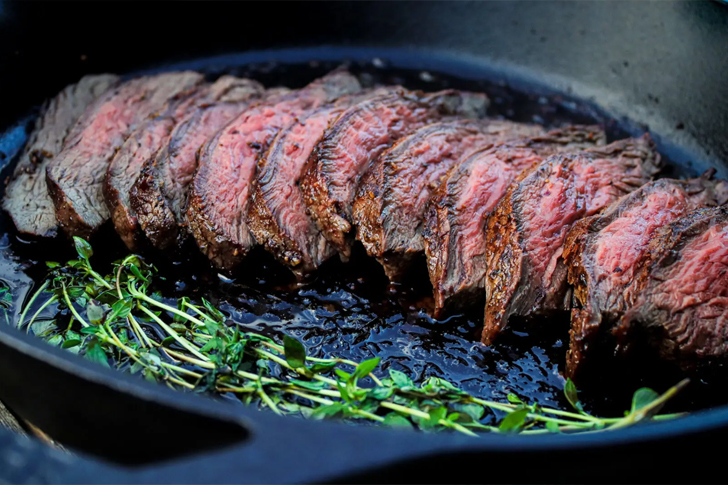the Balanced Fusion of Flavor and Value
In today’s culinary landscape, balancing flavor and value is not just a luxury but a necessity. As food prices fluctuate and the demographic of discerning diners grows, restaurants, food manufacturers, and home cooks are all striving to craft dishes that satisfy the palate without breaking the bank. This article delves into how these players in the food industry are achieving a harmonious blend of taste and economical pricing, offering insights into strategies that others can adopt.

The Current State of Food Economics
The global economic conditions, especially post-pandemic, have had a significant impact on food prices. According to the Consumer Price Index, food prices rose approximately 6.3% between 2021 and 2022. This increase has prompted chefs and food enthusiasts to rethink their approach to menu planning and ingredient sourcing, ensuring that they can continue to offer compelling dishes without escalating prices excessively.
Creative Ingredient Sourcing
One of the main strategies adopted by culinary professionals to mitigate costs has been innovative ingredient sourcing. By establishing relationships with local farmers and producers, restaurants not only secure fresher ingredients but also reduce transportation costs, which can keep menu prices down. This local sourcing trend has grown substantially; a USDA report noted an increase in direct-to-consumer farm sales by over 300% in the past decade, reflecting a shift towards local, more cost-effective food procurement practices.
Seasonal Menus: A Win-Win for Flavor and Cost
Seasonal menus are another effective strategy for balancing flavor and cost. By using ingredients that are in season, chefs can purchase at lower prices due to the higher availability of produce, which is typically more flavorful and nutritious. This practice also encourages culinary creativity, as chefs regularly brainstorm innovative ways to use the season’s harvest. For instance, a study by the National Restaurant Association showed that 62% of chefs consider seasonal menus one of the most effective cost-saving measures while enhancing the dining experience.
Technology and Food Preparation
Advancements in technology have also played a critical role in achieving the fusion of flavor and value. Modern cooking appliances and techniques, like sous-vide and precision cooking, allow chefs to make the most of less expensive cuts of meat by cooking them more precisely to enhance flavor and tenderness. Food waste reduction technology, such as vacuum sealing and improved refrigeration methods, also helps in lowering costs by preserving ingredients longer and maintaining their quality.
The Role of Fusion Cuisine
Fusion cuisine, a blend of culinary traditions from different countries, also plays a pivotal role in the balanced fusion of flavor and value. By integrating diverse, less expensive ingredients into traditional dishes, chefs can create new, exciting flavors that keep customers coming back. For example, a restaurant might use a traditional, cheaper grain like millet in a popular Asian stir-fry instead of rice, enhancing both the nutritional value and the taste profile while keeping costs low. This culinary creativity not only attracts a broad demographic but also keeps food costs in check.
Consumer Education and Engagement
Engaging consumers through education about the sources and benefits of ingredients can also enhance perceived value. Culinary establishments are increasingly holding workshops, cooking classes, and farm visits, enabling them to justify their pricing strategies by demonstrating the quality and sustainability of their offerings. These initiatives help foster a connection between the consumer and their food, increasing customer loyalty and satisfaction.
Case Studies of Success
Many restaurants have successfully found the sweet spot between flavor and cost. For instance, a New York-based restaurant renowned for its farm-to-table approach has maintained a loyal customer base by offering an ever-changing menu based on what’s available locally and seasonally, thereby keeping their costs down and flavors robust. In another example, a mid-range Asian fusion eatery utilizes locally sourced vegetables and lesser-known seafood to provide a gourmet dining experience at a fraction of the usual cost.
Conclusion: The Future of Flavor and Value
As the food industry continues to evolve, the blend of flavor and value will remain a critical focus. With economic unpredictability still a factor, the strategies discussed—from local sourcing and seasonal menus to technology use and consumer education—will be integral for culinary success. The establishments that can navigate these elements effectively will not only survive but thrive, continuing to delight palates while managing their bottom lines.
This balanced approach not only satisfies the modern consumer’s palate and wallet but also fosters a more sustainable and innovative culinary culture that can withstand economic shifts and changing consumer tastes.







Recent Comments